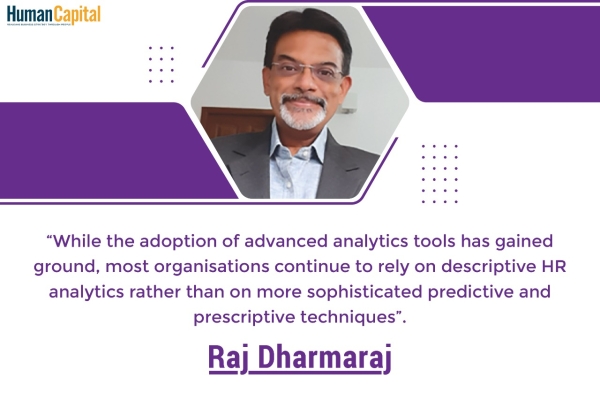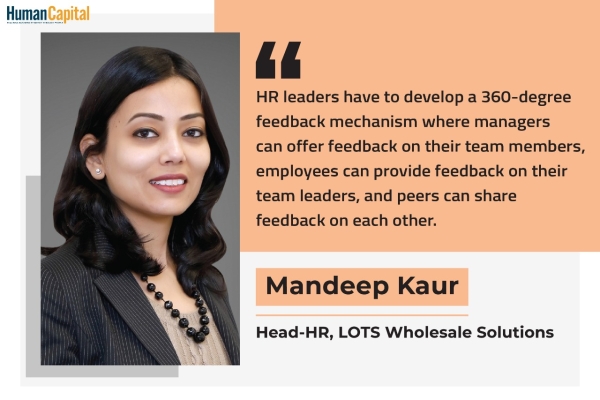While exit interviews have advantages if conducted effectively, the barriers outweigh the benefits because of the employee’s interest and mindset post-resignation, the facilitator’s ability to look for deep insights, the timing of the interaction, and so on.
You might have heard the expression: “Stay where you are celebrated and not just tolerated.” It truly reflects the sentiments of professionals on the cusp of a new opportunity.
Findings from research done in Fortune 500 companies state that 91% of organisations conduct exit interviews, and 89% of the time, it is undertaken to identify problem areas and retain talent. However, the larger question is whether exit interviews deliver on their raison d’être.
Through one-on-one interviews with senior HR leaders, I found that the majority of them believed an early warning system (EWS) is more helpful than exit interviews in understanding and addressing organisational issues related to culture, engagement, and employee connection. It also helps identify gaps or success stories of line manager support to drive high performance and employee satisfaction.
The adage “Prevention is better than cure” is perhaps most apt for employee retention. While exit interviews have advantages if conducted effectively, the barriers outweigh the benefits because of the employee’s interest and mindset post-resignation, the facilitator’s ability to look for deep insights, the timing of the interaction, and so on.
On the other hand, EWS proactively delivers on employee retention, driving high performance, implementing initiatives based on the voice of the customer, and having seamless employee connection. All these help build employee trust in the organisation’s culture. A well-rounded EWS also leads to reduced operating expenses around hiring and training new employees. These savings, coupled with reduced transitional productivity loss, can be critical bottom-line drivers in a post-pandemic world.
The Essential Elements of a Successful EWS
1. The Framework
Capture the indicators that can make or break an employee’s decision to stick around. To identify the correct triggers, understand the business scenario, the employee lifecycle stage, the USPs of the organisation, the challenges, the shared expectations, business results and the trends from the past data/voice of employees.
For example, take a sample population or an entire vertical at a time and look at whether the employee:
• has role/location comfort
• has good work-life balance
• feels that there is transparency in communication and the leadership teams/HR teams/managers connect regularly
• feels his efforts are well-recognised
• is highly driven and motivated
• is happy with the initiatives taken for engagement/learning
• feels secure about his/her future in the organisation
• will promote the brand to his/her family and friends, etc.
Based on some of the above triggers, you can conduct detailed personal interactions for qualitative insights coupled with quantitative surveys through Google Forms/SurveyMonkey to help plot the RAG (red/amber/green) status and derive percentages for each parameter according to the number of responses. The RAG Metric Scale is simple to use – red denotes maximum unfavourable responses, amber denotes neutral responses, and green denotes satisfactory responses – which helps us pick the area of action accordingly.
The next step is to correlate the findings with employee’s behaviour/ attitude at work (whether the employee is happy/sad/grumpy, displays different body language/appears detached, or is often coming late/being absent with no lucid/concrete reason upon checking). Further, you can plot the employees on a grid with their performance and risk of attrition in a matrix of high/medium/ low to give a holistic picture.
2. Co-Create Action Plans
A collaborative approach to creating action plans helps set the right expectations and define the picture of success (SMART goals). It is crucial to segment plans into short-, medium- and long-term time frames so that there are quick, tangible wins and continuous structural improvements in the organisational culture.
Here are a few examples:
Situation I: Many of us have experienced attrition on account of location discomfort, lack of role clarity or desired support from the manager, and low compensation. Such cases need to be identified and addressed at an individual level with exclusive action taken by looking at job rotation, location change, continuous feedback from the manager, and correction of compensation (wherever possible).
Situation II: If a majority of the employees say during individual interactions that they are not happy with the fun at work initiatives and the survey data also reflects a cumulative higher percentage of employees indicating it under the “red” category, then this needs to be addressed at an organisational level, after which there is a need to deep-dive further with different cohorts about what will help pull that up instead of just implementing a suggested plan or something that has worked in the past.
Situation III: An instance of redflagged recognition I faced was that regular, smaller wins were not done in a timely manner and depended on quarter completion, among other criteria, which led to demotivation at the group level. After a candid focus group discussion (FGD) on co-creating a solution, I designed instant-recognition templates and posted them on social media platforms. Our team used appreciation cards to share quick wins with everyone in the organisation. A simple experience of an employee sharing that s/he is fond of likes/comments on personal social media platforms paved the way to implement a similar initiative customised to a corporate setup.
3. Leverage on a Repeatable Process
It is imperative to continuously check employees’ pulse through detailed conversations and refer to RAG indicators on key parameters until they move towards the green from red/amber in a sustainable manner. Develop the HR vertical’s capability to turn the pulse data into powerful, actionable insights. I have seen attrition going down from a whopping double-digit to single-digit with powerful early conversations and actively listening to employees as a repeatable process.
For instance, upon completion of the whole exercise, reconnect with employees at 30/60/90 days. Pick up success stories from the trends and conduct the activity again bi-annually or annually to see the change. The other scenario would be things not working on ground post-action; hence the reconnect sessions will bring fresh thought.
The key to success is close looping the issues. A repeatable process helps identify blind spots on culture fatigue and if there is a need to rejuvenate.
When delivered with sincere rigour, these simple, practical steps strengthen our EWS journey, which, in my words, help in EWSS or “Employees with Say, Stay.”

Has COVID-19 forever changed the way we live and work?
Trending
-
SBI General Insurance Launches Digital Health Campaign
-
CredR Rolls Out 'Life Happens' Leave For Its Employees
-
Meesho Announces 30-Week Gender-Neutral Parental Leave Policy
-
Microsoft Unveils Tech Resilience Curriculum To Foster An Inclusive Future
-
60% Indian Professionals Looking For Job Change Due To COVID: Survey
-
SpringPeople And Siemens Collaborate For Digital Transformation Push
-
86% Professionals Believe Hybrid Work Is Essential For Work Life Balance: Report
-
Almost 1 In Every 3 People's Personal Life Affected Due To Work Stress
-
Meesho Rolls Out Reset And Recharge Policy For Employees
-
80% Of Talent Leaders & Academics Say Pandemic Changed Skill Needs For Youth: Report
-
Hero Electric Rolls Out 'Hero Care' Program For Employees
-
Human Capital In Collaboration With ASSOCHAM Hosts Virtual Conference
-
IKEA India, Tata STRIVE Collaborate To Create Employability And Entrepreneurship Opportunities
-
SAP India, Microsoft Launch Tech Skilling Program for Young Women
-
DXC Technology, NASSCOM Collaborate For Employability Skills Program
-
Lenskart To Hire Over 2000 Employees Across India By 2022
-
Mindtree Launches Learn-and-Earn Program
-
Tata AIA Extends 'Raksha Ka Teeka' To Its Employees
-
Swadesh Behera Is The New CPO Of Titan
-
NetConnect Global Plans To Recruit 5000 Tech Professionals In India
-
Hubhopper Plans To Hire 60% Of Indian Podcasters By 2022
-
Corporate India Needs More Women In Leadership Roles: Report
-
Aon to Invest $30 Million and Create 10,000 Apprenticeships by 2030
-
Tech Mahindra Launches ‘Gift a Career’ Initiative for Upskilling of Youth
-
40% Women Prefer Flexible Working Options in Post-COVID World: Survey
-
3 out of 4 companies believe they can effectively hire employees virtually: Report
-
Vodafone , CGI and NASSCOM Foundation launch digital skills platform
-
Odisha: Bank, postal employees to deliver cash for elderly, differently-abled persons
-
Skill India launches AI-based digital platform for "Skilled Workforce"
-
Hiring activity declines 6.73% in first quarter: Survey
-
70% startups impacted by COVID-19 pandemic
-
Bajaj Allianz Life ropes in Santanu Banerjee as CHRO
-
Over 70 Percent MSMEs look at cutting jobs to sustain businesses
-
93 Per Cent employees stressed about returning to office post-lockdown
-
Johnson & Johnson India announces family benefits for same gender partners
-
Indian firms turning friendly towards working mothers
-
Welspun India names Rajendra Mehta as new CHRO
-
Wipro partners with NASSCOM to launch Future Skills platform



Human Capital is niche media organisation for HR and Corporate. Our aim is to create an outstanding user experience for all our clients, readers, employers and employees through inspiring, industry-leading content pieces in the form of case studies, analysis, expert reports, authored articles and blogs. We cover topics such as talent acquisition, learning and development, diversity and inclusion, leadership, compensation, recruitment and many more.
Subscribe Now












































Comment